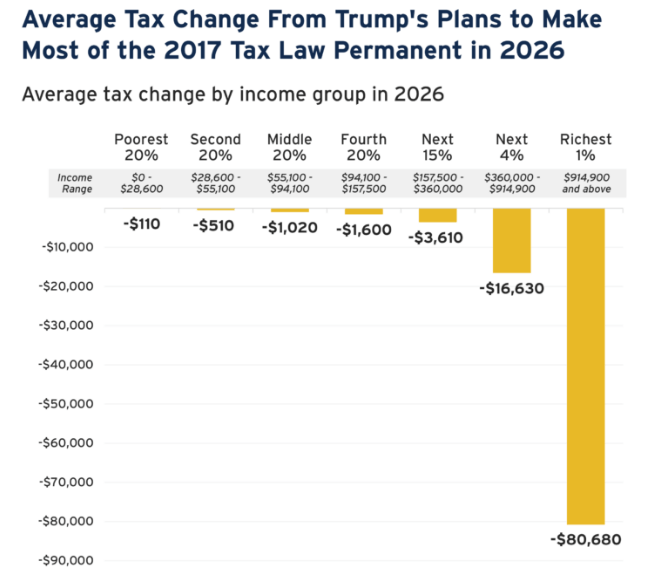In 2025, the U.S. government approved a completely new tax law. It is 887 pages and introduces plenty of changes to taxes in America. Folks are referring to it as the “One Big Beautiful Bill” because it does not merely update some things; it overhauls many tax rules from the 2017 Tax Cuts and Jobs Act (TCJA).
Do not worry if taxes are complicated. This easy blog will explain to you what remains the same and what is different in the 2025 tax code.
What Remains the Same from the 2017 Tax Code?
One huge thing that has not changed is the tax rates on federal income. In the year 2017, the government established seven tax brackets. These are the tax brackets that will give you an idea of the amount of tax you are to pay in relation to your income.
That law, which goes into effect in 2025, fixes those rates in place, such that those rates will not automatically expire in 2025 as planned. Therefore, almost all people will pay tax rates that have been paid since 2017.
2025 Federal Income Tax Brackets:
- 10% for the lowest earners
- 22%, 24%, and 32% for middle-income earners
- 37% is the highest rate for top earners
- (Single: Over $626,350 | Married Couples: Over $751,600)
This means if you earn less, you stay in a lower tax bracket. And the top tax rate stays at 37%, it would not go back up to the old 39.6% rate.
New Tax Rules for Small Business Owners and the Self-Employed (2025)
In case you own a small company or are self-employed, you can find some really nice upgrades in this new law.
1. The 20% Deduction on Business Income is permanent
In case you are self-employed or in case you own a business, you may continue deducting 20% of your business earnings against your taxes. This is no longer a temporary rule.
2. Higher Income Limits
Even if you make more money, you might still qualify for the 20% deduction because the income cutoffs have been raised.
3. 100% Dedication for Business Equipment
If you buy equipment for your business after January 19, 2025, you can now deduct the full cost right away. That means big savings for business owners.
4. Employee Expenses Can not Be Deducted
If you are a regular employee (not self-employed), you can not deduct any work expenses you paid for yourself. That includes things like uniforms, supplies, or training costs, unless your employer reimburses you.
5. Home Office Deduction Still Allowed
If you are self-employed and work from home, you can still deduct home office expenses. That includes a portion of your rent, electricity, internet, and more, as long as the space is used for work.
New Tax Benefits and Modifications
The legislation contains certain new provisions that Donald Trump had guaranteed in his campaign, including no taxation on tips, no taxation on overtime pay up to $12,500, no taxation on car loan interest, and no taxation on Social Security benefits.
Inflation adjustments create minor hikes in some thresholds, such as foreign earned income exclusion, exclusions on the estate tax, and adoption credits for 2025.
What About Energy and Other Credits?
Certain tax credits for energy efficiency are expiring or will be limited:
- Credits for residential energy upgrades, such as windows or solar panels, are set to expire after 2025.
- The electric vehicle tax credit for vehicles bought after September 30, 2025, will expire.
How Does the New Tax Law Affect You?
If you are an individual taxpayer or business owner:
- You can look forward to more stability since your tax rates and most deductions are now permanent.
- You might gain from expanded standard deductions and regular business income deductions.
- Higher earners have to look after itemized deduction limits and state and local tax deduction limits closely.
- Self-employed wage earners receive some new deductions to assist in decreasing taxable revenue.
- A few former temporary tax credits and deductions would not be available after 2025.
Why is This New Tax Law Important?
This new tax code translates into Americans a lot of the 2017 law’s tax advantages secured for the long term. However, it also creates permanent reductions in deductions, so wise tax planning is still necessary. The phased-in increases and decreases in SALT-type deductions also translate into taxpayers having to watch income amounts closely to know what benefits they qualify for.
This legislation is rather complicated, but in essence, it is reaffirming that most of the tax deductions that were first implemented in 2017 are indeed going to stick around, with some significant changes and a few new modifications involving individuals and businesses alike.
Conclusion
This blog provides the basics of the new 2025 tax legislation for an individual filer, a joint filer, or a small business owner. It will not contain all the details, but it introduces the substantial changes and changes to permanencies that you ought to know regarding your tax planning.
In case you require more detailed guidance, especially regarding business-related deductions or even specific situations, it works in your favor when you consult a tax expert or use high-quality tax software.


